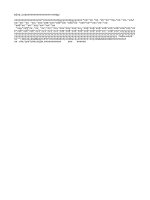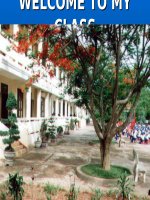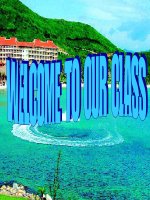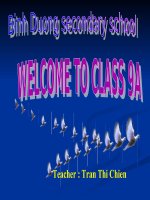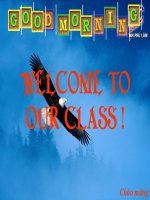4 2 5 a trip to the capitol
Bạn đang xem bản rút gọn của tài liệu. Xem và tải ngay bản đầy đủ của tài liệu tại đây (3.22 MB, 10 trang )
Suggested levels for Guided Reading, DRA,™
Lexile,® and Reading Recovery™ are provided
in the Pearson Scott Foresman Leveling Guide.
Genre
Narrative
nonfiction
Comprehension
Skills and Strategy
• Main Idea and
Details
• Generalize
• Summarize
A TRIP TO
THE CAPITOL
Text Features
•
•
•
•
Heads
Map
Diagram
Sidebar
Scott Foresman Reading Street 4.2.5
ISBN 0-328-13439-2
ì<(sk$m)=bdedjh< +^-Ä-U-Ä-U
by Sharon Franklin
Reader Response
A TRIP TO
THE CAPITOL
1. What was the main thing the author wanted to
say about the Capitol? What are some details
that support this main idea? Use a graphic
organizer like the one below to write your
answers.
Main Idea
Detail
Detail
Detail
2. Reread page 6. Summarize how the executive
branch of government provides checks and
balances for the other two branches.
3. Use a dictionary that tells about word origins to
find out which of these words are related: politics,
by Sharon Franklin
policy, polish, police,
polio, politician. What is the
meaning of the Greek word that politics comes
from?
4. Did the fact that this book has a young person as
narrator make it more or less interesting to you?
Explain your answer.
Editorial Offices: Glenview, Illinois • Parsippany, New Jersey • New York, New York
Sales Offices: Needham, Massachusetts • Duluth, Georgia • Glenview, Illinois
Coppell, Texas • Ontario, California • Mesa, Arizona
Every effort has been made to secure permission and provide appropriate credit for
photographic material. The publisher deeply regrets any omission and pledges to
correct errors called to its attention in subsequent editions.
Unless otherwise acknowledged, all photographs are the property of Scott Foresman,
a division of Pearson Education.
Photo locators denoted as follows: Top (T), Center (C), Bottom (B), Left (L), Right (R),
Background (Bkgd)
Cover: ©Joseph Sohm/ChromoSohm Inc./Corbis; 3 © Joseph Sohm/ChromoSohm
Inc./Corbis; 4 ©Bettmann/Corbis; 5 © Bettmann/Corbis; 6 © Wally McNamee/Corbis;
7 ©Joseph Sohm/ChromoSohm Inc./Corbis; 10 © Roman Soumar/Corbis; 11 © KellyMooney Photography/Corbis; 12 © Charles E. Rotkin/Corbis; 13 Dennis Brack/IPN/
©Aurora Photos; 14 © Reuters/Corbis
ISBN: 0-328-13439-2
Copyright © Pearson Education, Inc.
All Rights Reserved. Printed in the United States of America. This publication is
protected by Copyright, and permission should be obtained from the publisher
prior to any prohibited reproduction, storage in a retrieval system, or transmission
in any form by any means, electronic, mechanical, photocopying, recording, or
likewise. For information regarding permission(s), write to: Permissions Department,
Scott Foresman, 1900 East Lake Avenue, Glenview, Illinois 60025.
2 3 4 5 6 7 8 9 10 V0G1 14 13 12 11 10 09 08 07 06 05
Talk about living history! My aunt took me
on a trip to Washington, D.C. Before we left, she
asked me what I wanted to see most, and I knew
my answer at once. I wanted to see the U.S.
Capitol. Imagine seeing something in person that
you have only read about in books. My teacher
asked me to present a report to the class about
my trip.
3
Legislative Branch
The Three Branches
of Government
Executive
White House
Judicial
Supreme Court
Legislative
United States Capitol
The legislative branch, or Congress, includes
the House of Representatives and the Senate.
This branch makes the country’s laws. Citizens
of each state vote for their own members of the
House and Senate.
The number of members in the House is based
on population. So states with more people have
more representatives. But all states elect two
senators each.
Among the powers of Congress are
• writing, discussing, and passing bills;
• declaring war on another country;
• making laws that control trade; and
• making laws regarding taxes and money.
Before we left, I did some research. Here are
some notes I made for my report.
The Founding Fathers tried to make sure that
no one person had too much power. They also
knew that a growing nation needed a strong
government. They wrote the Constitution to deal
with these challenges. In it, they outlined three
branches, or parts, of government: legislative,
executive, and judicial.
Each branch has responsibility for different
jobs. Together, the three branches are designed
to make sure the government runs smoothly and
protects the rights of its citizens. Each branch has
the power to challenge the other two branches.
This system of checks and balances prevents any
one branch from having too much power.
4
5
Judicial Branch
The Supreme Court is the highest court in
the United States. It is made up of judges called
justices. The President nominates all Supreme
Court justices, including the Chief Justice of the
United States. The Senate then must approve the
President’s choice.
The courts decide what laws mean, how
they are applied, and whether they uphold the
Constitution. This is how the judicial branch
checks and balances decisions made by the
legislative and executive branches.
Executive Branch
The executive branch makes sure that laws are
obeyed and government policies are carried out.
It is made up of the President, the Vice President,
the Cabinet, and agency and department heads.
The President solemnly swears to uphold the
Constitution. The President
• is commander-in-chief of the armed forces;
• chooses Cabinet members and oversees
federal agencies;
• can veto bills passed by Congress; and
• can nominate federal judges.
To run for President, you must be a naturalborn citizen, be at least 35 years old, and have
lived in the United States for at least 14 years.
The President is elected for a four-year term and
may be re-elected for one more four-year term.
6
7
The U.S. Capitol Building
We arrived in Washington, D.C., and found
that the many buildings tell the story of our
nation’s history. The Capitol building was built
from 1793 to 1826 as the first meeting place of
Congress.
First I noticed the big round dome. The
original building included the dome, and the
Senate and House wings. As the United States
grew, more legislators were needed to deal with
the nation’s politics. The Capitol became too
small. In 1857 and 1859, new Senate and House
chambers were added.
The Tour Begins
Many important
buildings stand along
the National Mall:
The Capitol
White House
Washington Monument
Lincoln Memorial
Jefferson Memorial
Vietnam Memorial
and other memorials
This Mall stretches two
miles from the Capitol to
the Lincoln Memorial.
Many great museums
surround the Mall:
Smithsonian Institution
National Gallery of Art
National Air and Space
Museum
National Archives
My aunt and I arrived in
Washington, D.C., and headed
for Capitol Hill.
8
9
Capitol Rotunda
The Rotunda is the round room beneath the
dome. The round painting at the top of the
dome, completed in 1865, includes 13 figures
that represent the original 13 colonies. A bronze
statue called Armed Freedom stands outside on
top of the dome.
The newest work of art was added in 1997.
It is a sculpture honoring three women who
promoted the right of women to vote. They were
Lucretia Mott, Elizabeth Cady Stanton, and Susan
B. Anthony.
Library of Congress
If you like to read books, this is the place to
visit. Imagine a library with about 532 miles of
bookshelves; more than 29 million books; and
almost 95 million maps, drawings, photographs,
recordings, and other materials! There is such a
library. It is the Library of Congress.
The Library is a resource for Congress and
the American people. People use the Library of
Congress to find documents from history.
10
11
Senate Office Buildings
The Senate has three office buildings for the
senators and staff: the Russell, Dirksen, and Hart
Senate Office buildings. Mountains and Clouds, a
70-foot sculpture is displayed in the Hart Senate
Office Building.
Inside the Senate and House office buildings,
senators and representatives write and enact
laws for the country. Senators are elected to sixyear terms, representatives to two-year terms.
Mountains
and Clouds
by
Alexander
Calder
House Office Buildings
In the original Capitol building, the House of
Representatives had one wing. Today, there are
four buildings: the Cannon, Longworth, Rayburn,
and Ford House Office Buildings.
The House buildings have offices and meeting
space for the many House committees. The
Rayburn building has a bronze statue of former
Speaker of the House Sam Rayburn. This building
even has a subway to the Capitol! That must be
very nice, especially on days when it is snowing
and the wind is howling.
12
13
Botanic Garden Conservatory
The Botanic Garden is the last stop on our
tour. It is not only restful and beautiful, but it is
also the oldest botanic garden in North America.
It has an amazing variety of plants that botanists,
or plant scientists, can use for studying and
learning.
The botanists who work at the garden keep
track of special historical plants and gifts from
other countries. They list rare plants and collect
medicinal plants that can’t be found elsewhere.
Looking Ahead
For more than 200 years, the U.S. Capitol
has preserved many reminders of our nation’s
humble beginnings, in the walls, grounds, and
art of the buildings and open spaces. Our tour
made me feel proud that I am a part of our
country’s history.
I also learned about all the people it takes to
run a country. It would be interesting to work
in the Capitol. I may sound vain, but seeing the
Capitol buildings made me want to become a
great leader myself someday. But for now, I will
finish this report so I can present it to the class
tomorrow.
14
15
Glossary
Constitution n.
document that
establishes the basic
principles of the U.S.
government.
howling adj. crying,
wailing, shrieking.
Reader Response
responsibility n. job,
duty, task.
solemnly adv. seriously,
earnestly
vain adj. proud,
inflated.
1. What was the main thing the author wanted to
say about the Capitol? What are some details
that support this main idea? Use a graphic
organizer like the one below to write your
answers.
Main Idea
humble adj. meek,
modest.
politics n. the art or
science of governing or
of policies.
Detail
Detail
Detail
2. Reread page 6. Summarize how the executive
branch of government provides checks and
balances for the other two branches.
3. Use a dictionary that tells about word origins to
find out which of these words are related: politics,
policy, polish, police, polio, politician. What is the
meaning of the Greek word that politics comes
from?
4. Did the fact that this book has a young person as
narrator make it more or less interesting to you?
Explain your answer.
16
